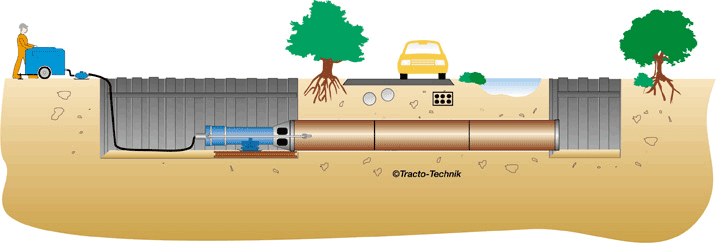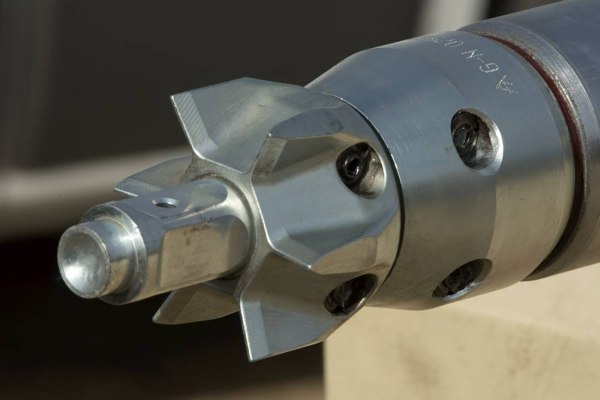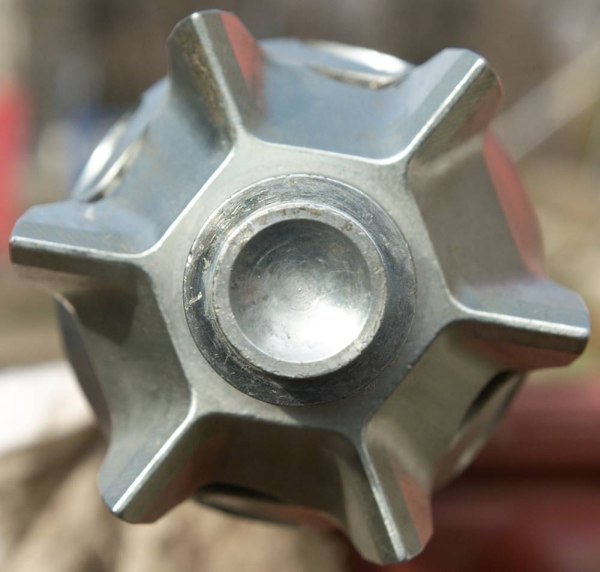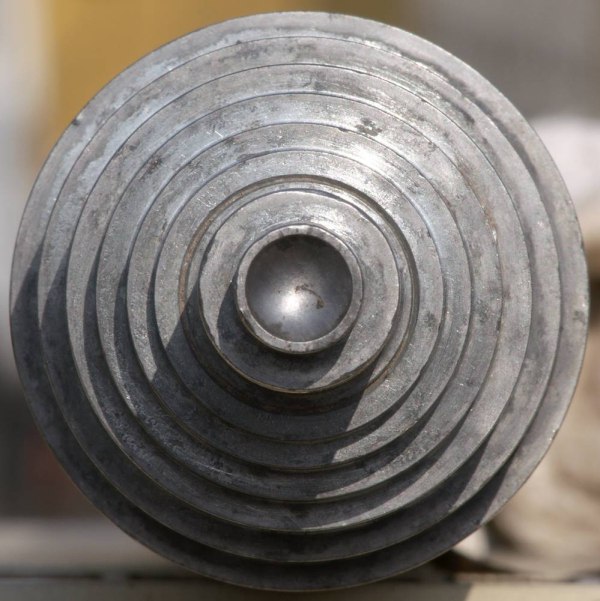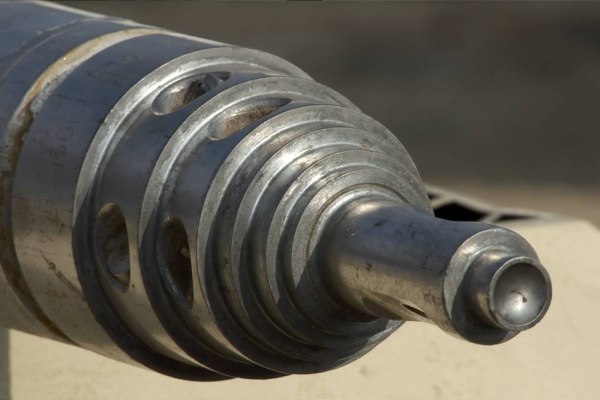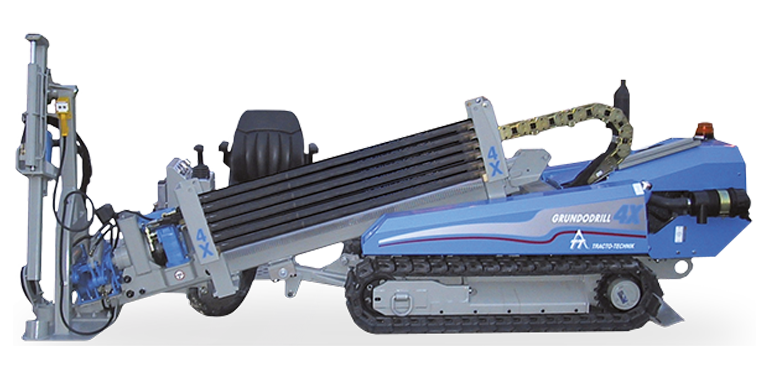Steel pipe jacking by pneumatic rocket drill -
A short description of the technology:
This is one of the technologies that does not require milling. Condensed air forces the rocket piston, attached to the front of the utility pipe, to follow an alternating movement to exert impact toughness on the chisel head in the nose of the equipment, ensuring progress while extruding soil.
In soils with larger particles of scrap or pebbles we use the so-called active head rocket where the chisel head can move independently of the rocket body, thereby the impact toughness is concentrated at the front of the equipment, shattering or pushing aside any obstacles from in front of the drill. Fixed-head rocket is more applicable in looser soils.
Applying pneumatic steel pipe jacking:
This method creates exact boreholes up to 25 metres with a diameter between 55 and 200 mm. The rocket can be used in all kinds of soil suitable for compression, such as clay sand, clay, etc., occasionally also in cases with a low proportion of pebbles.
Minimum space requirements: Length – one half of the length of the rocket; width – to allow the machine operator ample space; depth: 0.2m deeper than the installation depth. Advantages: easy to set up, simple, quick, suitable for installing cables and several types of pipes (CPE, PVC, steel). It requires minimum working space and supplementary devices for use, frequently making it an economical alternative to larger, more expensive directed drills.
Pipe jacking with a rammer -
A short description of the technology:
This is one of the technologies that does not require milling where the steel pipe to be installed is driven through by a unique pipe driver equipment (rammer) under the facility that needs to be crossed (road, railway, stream, public utility, etc.)
GRUNDORAM (the pneumatic rammer) is driven by compressed air, it does not require a fixed support, and is attached to the end of the pipe to be drive in by straps. A cutting shoe may be attached to the rim of the first pipe to protect the utility pipe, while the rammer unit is attached to the pipe by a rammer cone through a rammer segment, not by forced connection.
After the first pipe segment has been jacked, the rammer is detached and next pipe segment is welded to the installed pipe. The rammer is then reattached to this segment and jacking is continued. This process is repeated until the desired pipe length is reached.
The next step is the removal of the earth from inside the pipe, which is easily done either by compressed air or by a Woma.
Applying pipe jacking with a rammer:
Where earth extrusion methods (pipe jacking with a pneumatic rocket drill) is not applicable due to the soil surroundings or the desired diameter.
For instance, the Tracto-Technik Apollo type rammer uses 40,000 J of impact energy for pipe diameters up to 3,000 mm. The GRUNDORAM pipe jacking machinery used by us is suitable for installing pipes with medium-size diameter (approx. 500mm) in soils with a slicing category between 1 and 5.
To whom, when, and for what purposes is steel pipe jacking recommended??
Steel pipe jacking is one of the public utility construction methods that does not require surface milling, and where the steel pipe to be installed is driven through by hydraulic jacking or by a unique pipe driver equipment (rammer) under the facility that needs to be crossed:
all types of roads | railway | streams | utility lines
.... etc!
Suitable for:
We use a GRUNDORAM type pipe ramming machine. It is suitable for precision installation of steel pies with a medium and larger diameter size (500mm) in varying length (the pipe diameter in mm divided by 10 equals the borehole length in metres), in soils with a slicing category between 1 and 5 (occasionally in category 6 soils as well.)
Advantages:
- due to a dynamic ramming drive, the slicing edge at the front of the pipe can easily shatter any obstacles in front instead of pushing them aside, creating more precision on target than in case of traditional jacking.
- there is no fixed support or pulley that could get stuck
- short start-up time
- simple handling
- suitable for being attached to various pipe diameters through the ramming cone
- transportable by a car and trailer
- suitable for ramming vertical secant pile walls
- cylindrical ramming segments prevent the bulging of the steel pipe; blunt welding is possible
- the single-piece cover has no threaded attachments, making it very resistant; there are no parts subject to wear and tear, and no material fatigue
- the radius rod is flexibly suspended, decreasing vibration
- trusted soil extruding technology
Considering the above, we recommend our steel pipe jacking technology to all who face the above issues in their work, that is:
- For those designing or implementing public utilities;
- For those who are authorised to issue milling permits: please consider, wouldn’t directional drilling be a better solution to the problem?


